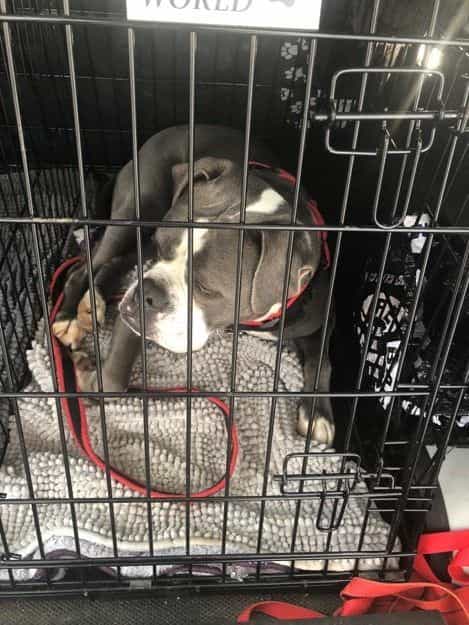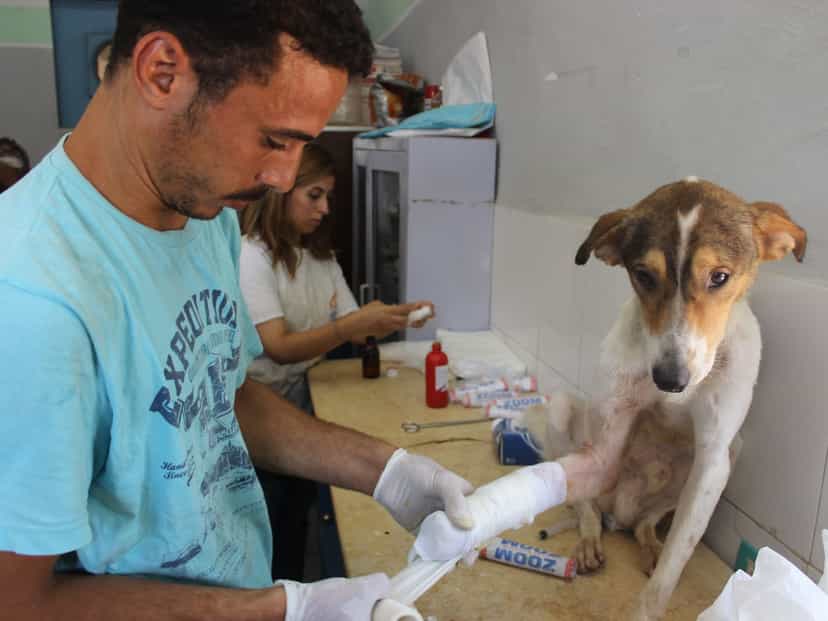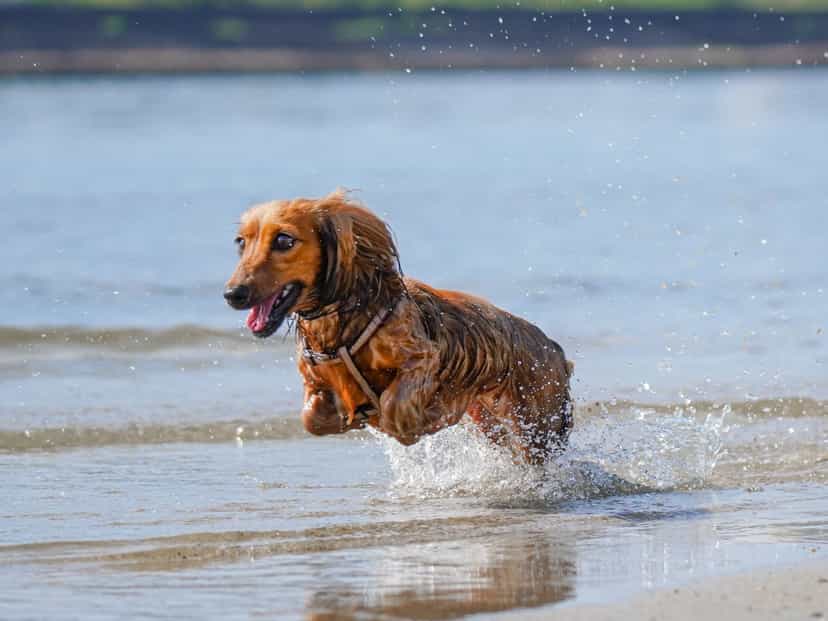
Whether you are planning a short trip to your favourite dog walking location or a longer day trip or a holiday, travelling safely and correctly with your dog is essential.
THE LEGAL BIT!
Rule 57 of The Highways Act states “When in a vehicle make sure dogs are suitably restrained so they cannot distract you while you are driving or injure you, or themselves if you stop quickly. A seat belt harness, pet carrier, dog cage or dog guard are ways of restraining a dog in the car”
Although there is no legislation specifically meaning that this is an offence if you are pulled over for an unrestrained animal you are likely to be prosecuted for “Driving without due care and attention”. This offence carries up to 9 points on your licence and up to a £5,000 fine. If you are involved in an accident and an unrestrained dog is in the car your insurance may also be invalid as well as any pet insurance.
Under the Welfare of Animals (Transport) (England) Order 2006 and the Welfare of Animals (Transport) (Wales) Order 2007 you must not transport an animal in such a way that causes or is likely to cause injury or unnecessary suffering to that animal.
THE STATS!
- In the UK, 48% of dog owners are breaking the Highway Code by not restraining their dogs properly in the car.
- 76% of dogs have no formal training on how to behave in the car.
- Only 60% of people believe that having an unrestrained dog in the car is dangerous!
- 86% of dog owners believe that their dog enjoys car journeys.
- Recent surveys have shown that 1 in 5 dog owners travel with their dog unrestrained in the car and 10% even place their dog on their lap!
- Surveys also showed that 50% of the UK dog owning / driving population (c2.5 million people) are not aware that having a dog unrestrained in the car is breaking the law
- Even more scarily 10% admitted that their dogs were a distraction and that they had taken their hands off the wheel to restrain the dog
- Whilst 5% admitted to taking selfies and playing with the dog whilst driving!!!
THE FACTS!
Travelling with a dog in the car involves more than just loading them into the car and setting off, especially if you are driving long distances or going away on holiday.
INTRODUCING YOUR DOG TO CAR TRAVEL
Introducing your dog to travelling in a car is a really important step in the process and should not be rushed. Travelling in a car can be distressing for a dog along with suffering from motion sickness. My staffie (Alfie) suffered terribly from motion sickness as a puppy and really disliked the car whereas my Old Time Bulldog took to the car immediately and just laid down and slept and still does.
To help to get your dog used to the car it is best to start as early as possible as part of their socialisation training. Obviously if you have a rescue dog then you may not be aware of how they feel about a car and you should follow the same socialisation training, but it may take a little more time and patience especially if they have had frightening experiences previously.
Be careful not to let your puppy jump up or down from the car as their joints are very soft and repeated jumping can cause damage that may lead to arthritis later in life. If you have a large breed puppy you can always make a ramp or purchase fold away ramps that are easy to stow during travel, especially if you are travelling the dog in the boot of your car and it is high up e.g. 4x4 type vehicle.
If your puppy / dog is unsure or apprehensive of the car initially you can just get the dog used to being in the car whilst it is stationary, engine off by feeding them their dinner in the car and letting them get out again. We are looking to create a positive experience for them. You can then progress to starting the engine. Once your dog is happy to get into the car you can then take them for a very short drive. Make sure that they have not eaten for at least 2 hours beforehand preferably a little longer as dogs that suffer from motion sickness are likely to throw up and that will set their confidence backward. Gradually increase the distance but do not rush this especially if they are sick.
This was a long slow process with Alfie as he was always so sick. We started off by travelling him in different positions in the car using a harness and seatbelt however nothing really seemed to help. Eventually I changed my car so that the dogs could travel in a cage in the boot. I deliberately chose a cage that had 2 separate sections in order that the dogs travelled separately but did not have too much room to move from side to side but could see each other and out of the window, Alfie has not been sick since this change and now happily jumps into the car (it is not a high jump)!
I did find that ginger helped him a little and I have a fabulous recipe for ginger drop scones for dogs – let me know if you would like a copy?
If you do have to make a long journey and you know your dog suffers from motion sickness talk to your vet as they can prescribe anti-sickness and anti-diarrhoea medication.

THE EQUIPMENT!
There are several options available to you depending upon the size of your dog and the make of your car!
CRATES
If you are planning on using a crate in the car ensure that you have crate trained your dog in the house as otherwise this will be an incredibly traumatic experience for them. Crates can be placed in the boot of your car (if a hatch back or estate). They are not ideal for a back seat as often these do not lay completely flat and the crate can also slide around unless secured via the adult seatbelt. If your boot allows for a crate, which often depends on the headroom and shape of the boot this is a great way to travel your dog as it means that even when you open the boot the dog can’t jump out.
CAGES
Similar to a crate a cage is often designed specifically for your make and model of car and maximises the space available for your dog – great for larger breeds. Again, they often have doors on the front to prevent you dog from jumping out of the boot when you open it. A well designed cage will have an escape hatch built in – this would allow you to be able to remove the dog by lowering the rear seats of the car in an accident, maybe if someone has run into the back of you and you can’t open the boot.

CARRIER
If you have a small breed dog then you may be able to use a carrier, again your dog should be used to this and comfortable with it before it is used in the car. The carrier will need to be secured using an adult seatbelt unless you are placing it into the footwell. If you are travelling with the carrier secured with an adult seatbelt on the front passenger seat, ensure that you have turned off the airbag.
N.B – with crates, cages and carriers ensure that these are big enough that you dog can sit, stand at full height, turn around comfortably and lie down in a natural position. Suitable bedding should be placed in the bottom for comfort and prevent slipping during the journey. There must be sufficient ventilation and airflow
BOOT GUARDS
These usually just separate the passenger area from the boot in order that your dog can’t jump over the back seat, but they do not stop the dog from pacing in the car, which in turn could lead to motion sickness. They also do not prevent the dog from jumping out when you open the boot so training will be required to ensure your dog has a good WAIT command. You may need to consider still securing your dog using a harness and seatbelt. The dog guard will protect you in the event of an accident but NOT your pet.
HARNESSES
Dog friendly harnesses come in a variety of shapes and sizes. Ensure that you have it fitted correctly to ensure that your dog can’t back out of it. You will also need to use a seatbelt connector with the harness. This clips onto the harness and then into the fixtures of the adult seatbelt in the car. The best type are those that have a short “bungee” section in them as this acts as a shock absorber if there is any sudden breaking. Ideally you will secure the dog behind the passenger front seat. This allows the dog to be able to see you when you are driving but they cannot pull at clothing or distract you in any way.
CAUTION – ensure that the harness and attachment you choose have been crash tested. Many dog harnesses do little to keep your dog safe during a collision or sudden stop. A crash test showed that many snapped at the buckle or ripped doing very little to keep your dog safe in a collision.

THE DOS AND DON’TS OF CAR TRAVEL!
DO:
Secure your dog correctly using whichever of the above equipment best suits your dog and your car make / model.
Make them comfortable, include their favourite toy or blanket in their crate, cage or carrier to relax them during the journey.
Keep your dog’s collar and tag on them whilst in the car. If there is an accident and your dog somehow escapes from the car, they will be very frightened and likely to run. You want to ensure that they can be easily identified.
If on a long journey, ensure that you have plenty of water available but keep this in a sealed bottle and take a bowl. You should never travel your dog with water especially in hot weather as the water will evaporate, causing humidity to rise which can make it difficult for your dog to breath. Always ensure that you have lots of water in case your dog gets too warm in the car and you need to actively cool them down.
Make regular stops to allow your dog to stretch their legs and take a drink / toilet break. Make sure you select an area that is safe such as a service station (these often have dog walking areas). Never stop on a hard shoulder unless an absolute emergency – this does not include your dog about to wee in the car! Plan these stop points ahead of your journey. Always keep your dog on a lead in public places.
Ensure you have your Full First Aid kit in the car, in case of any emergencies.
Consider the weather – if it is hot decide whether you really have to make the journey at that time or whether the dog really needs to come? If this can’t be avoided keep the air conditioning on (but not blowing directly in your dog’s face) or keep the windows open. Remember cars heat up very quickly even if parked in the shade. Dogs do not sweat to cool down like we do they can only pant and this often isn’t enough to keep their body temperature down in a very hot car. Have a minimum of 5 Litres of water with you for active cooling. Dogs at highest risk of heatstroke are Brachycephalic (short nosed) breeds, dogs with underlying heart or lung conditions, older dogs and overweight dogs but ALL dogs can be affected on a hot day.
If it is raining heavily ensure you have towels to dry your dog after the toilet breaks.
Drive carefully – accelerate, brake and manoeuvre more gently than normal especially if your dog has the whole boot to move around in as sudden changes in speed or direction can cause the dog to fall and potentially injure themselves.
Use sunshades or visors on the windows if not tinted to shelter your dog from direct sunlight.

DON’T:
Don't allow your dog to stick their head of the window. Gravel and debris can damage your dog’s eyes. This could also distract other drivers. You should open a window furthest away from your dog to allow your dog to get fresh air without the risk of injury.
Don't feed your dog for 2 hours before a long journey or during the journey if you can avoid it as this increases the risk of motion sickness, which is distressing for the dog. With Alfie I always knew when he was going to be sick as he would start to excessively salivate and lick his lips and nose (a typical sign of stress).
Never leave your dog alone in the car.
Do not travel with your dog if they are unwell or injured, unless with veterinary advice.

We all love our dogs and they are an integral part of our family and it is great to include them in family outings and holidays, but we wouldn’t travel a child in a car these days without a correctly fitted and approved car seat, let’s not take that risk with our dogs.


